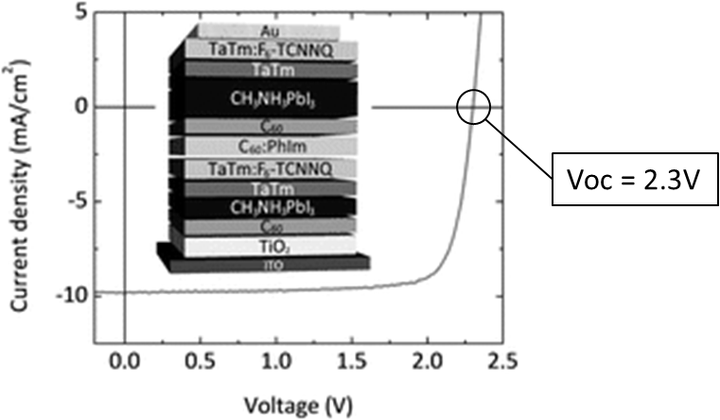High voltage vacuum-deposited CH3NH3PbI3–CH3NH3PbI3 tandem solar cells

Abstract
Metal halide perovskite based solar cells have rapidly evolved to reach power conversion efficiencies around 23% and operational lifetimes in excess of several thousand hours. Significantly higher efficiencies are predicted for solar cells integrating two different bandgap perovskite absorbers. This has however not been achieved to date, due to insufficient increase of photo-voltages when employing wider bandgap perovskite absorbers and due to the difficulty to form perovskite multi-layer stacks from solution processes. Using optically flat and well controlled vapor phase deposited layers, the optical constants of all layers in a tandem solar cell were determined. These results were employed to calculate the ideal configuration for a tandem cell based on two sub-cells with the same perovskite absorber. The tandem stack design is crucial requiring that both sub-cells generate the same current. The targeted film thicknesses were experimentally reproduced using industrial scale compatible vapor phase deposition methods. As a result, solar cells exhibiting an open-circuit voltage of 2.3 volts were obtained.1 Besides their application in photovoltaic conversion, such high voltages enable their use as photovoltaic-driven electrochemical cells, including direct power conversion from solar to chemical fuels (water splitting hydrogen production) and carbon dioxide reduction.